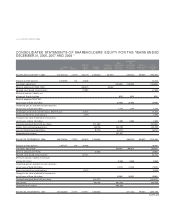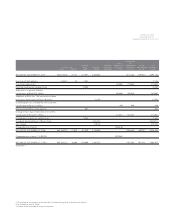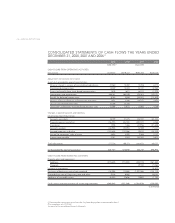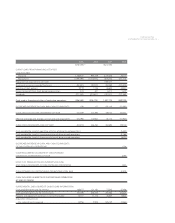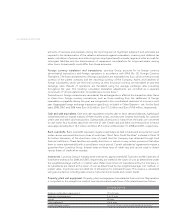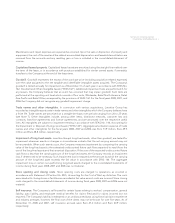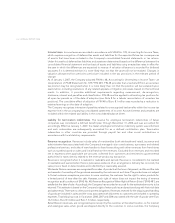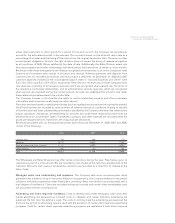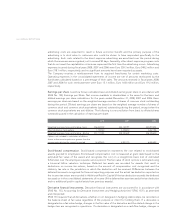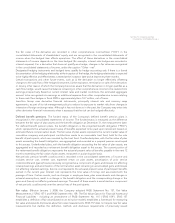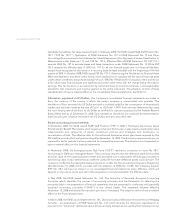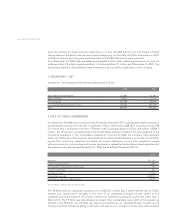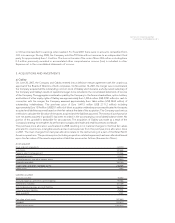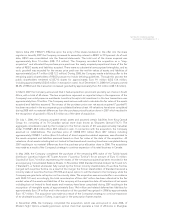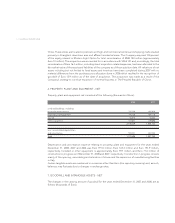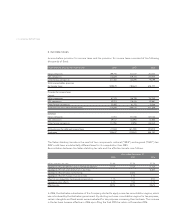LensCrafters 2008 Annual Report Download - page 66
Download and view the complete annual report
Please find page 66 of the 2008 LensCrafters annual report below. You can navigate through the pages in the report by either clicking on the pages listed below, or by using the keyword search tool below to find specific information within the annual report.
> 64 |ANNUAL REPORT 2008
advertising costs are expected to result in future economic benefit and the primary purpose of the
advertising is to elicit sales to customers who could be shown to have responded specifically to the
advertising. Such costs related to the direct response advertising are amortized over the period during
which the revenues are recognized, not to exceed 90 days. Generally, other direct response program costs
that do not meet the capitalization criteria are expensed the first time the advertising occurs. Advertising
expenses incurred during fiscal years 2008, 2007 and 2006 were Euro 339.3 million, Euro 348.2 million and
Euro 318.1 million, respectively, and no significant amounts have been reported as assets.
The Company receives a reimbursement from its acquired franchisees for certain marketing costs.
Operating expenses in the consolidated statements of income are net of amounts reimbursed by the
franchisees calculated based on a percentage of their sales. The amounts received in fiscal years 2008,
2007 and 2006 for such reimbursement were Euro 15.1 million, Euro 16.8 million and Euro 19.2 million,
respectively.
Earnings per share. Luxottica Group calculates basic and diluted earnings per share in accordance with
SFAS No. 128,
Earnings per Share
. Net income available to shareholders is the same for the basic and
diluted earnings per share calculations for the years ended December 31, 2008, 2007 and 2006. Basic
earnings per share are based on the weighted average number of shares of common stock outstanding
during the period. Diluted earnings per share are based on the weighted average number of shares of
common stock and common stock equivalents (options) outstanding during the period, except when the
common stock equivalents are anti-dilutive. The following is a reconciliation from basic to diluted shares
outstanding used in the calculation of earnings per share:
2008 2007 2006
Weighted average shares outstanding - basic 456,563,502 455,184,797 452,897,854
Effect of dilutive stock options 1,153,542 3,345,812 3,287,796
Weighted average shares outstanding - dilutive 457,717,044 458,530,609 456,185,650
Options not included in calculation of dilutive
shares as the exercise price was greater than the
average price during the respective period 18,529,635 4,947,775 6,885,893
Stock-based compensation. Stock-based compensation represents the cost related to stock-based
awards granted to employees. Stock-based compensation cost is measured at grant date based on the
estimated fair value of the award and recognizes the cost on a straight-line basis (net of estimated
forfeitures) over the employee requisite service period. The fair value of stock options is estimated using
a binomial lattice valuation technique. Deferred tax assets are recorded for awards that result in
deductions on income tax returns, based on the amount of compensation cost recognized and the
statutory tax rate in the jurisdiction in which the deduction will be received. Differences between the
deferred tax assets recognized for financial reporting purposes and the actual tax deduction reported on
the income tax return are recorded in Additional Paid-In Capital (if the tax deduction exceeds the deferred
tax asset) or in the consolidated statements of income (if the deferred tax asset exceeds the tax deduction
and no additional paid-in capital exists from previous awards).
Derivative financial instruments. Derivative financial instruments are accounted for in accordance with
SFAS No. 133,
Accounting for Derivative Instruments and Hedging Activities
(“SFAS 133”), as amended
and interpreted.
SFAS 133 requires that all derivatives, whether or not designed in hedging relationships, be recorded on
the balance sheet at fair value regardless of the purpose or intent for holding them. If a derivative is
designated as a fair-value hedge, changes in the fair value of the derivative and the related change in the
hedge item are recognized in operations. If a derivative is designated as a cash-flow hedge, changes in


